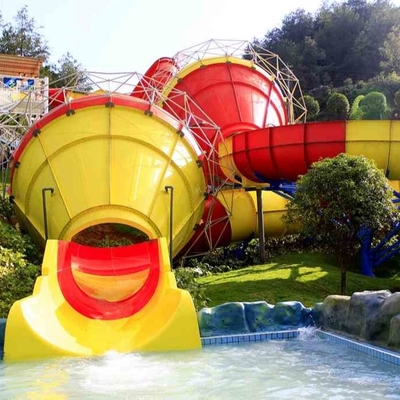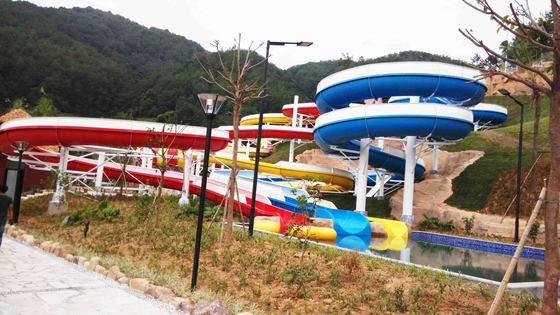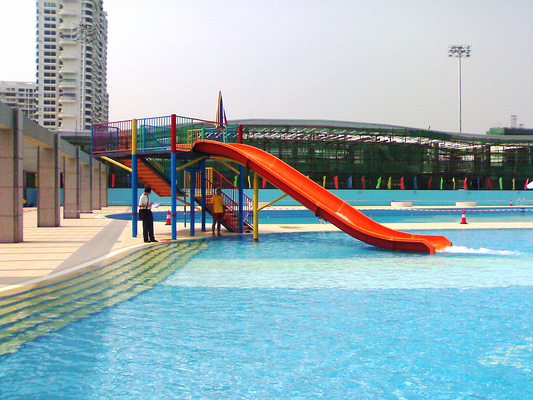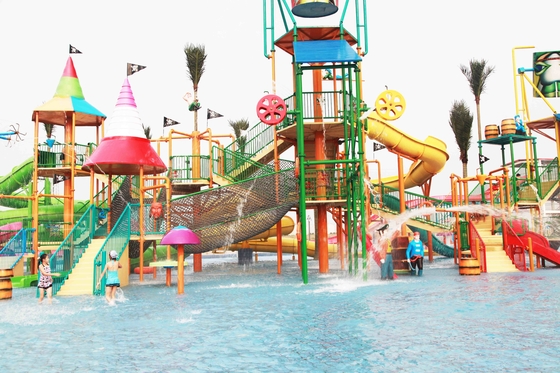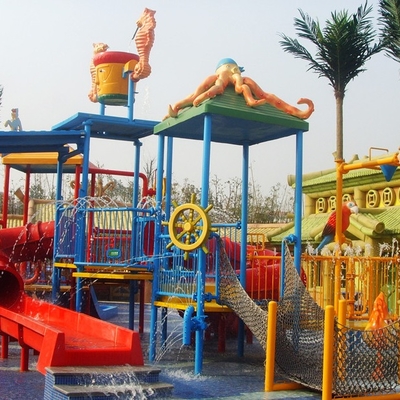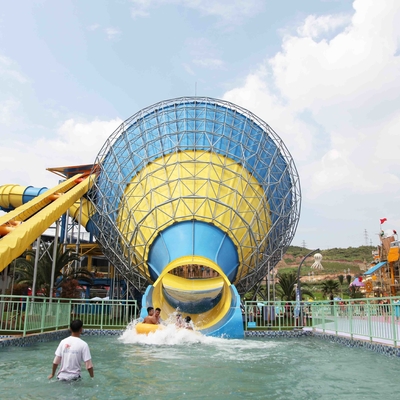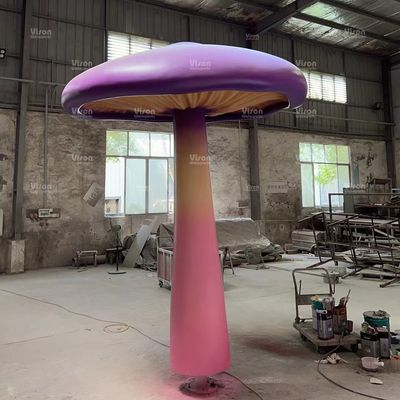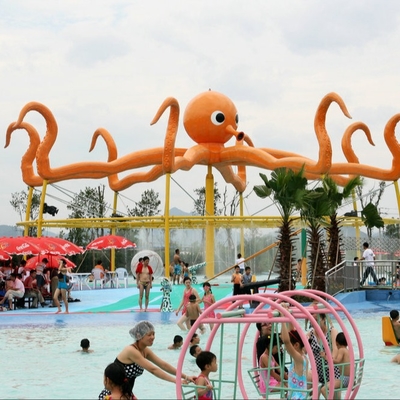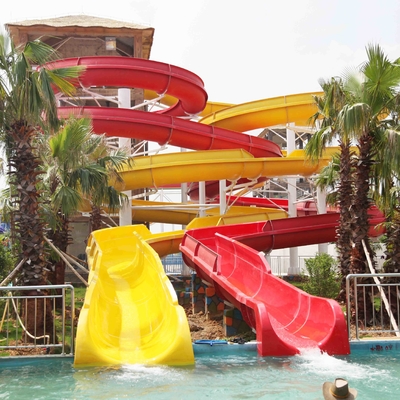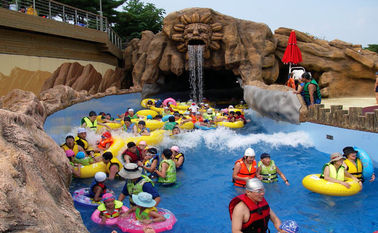Last year, I met a client who called us to help them install water park equipment from other competitor in China. I have been thinking about this for a year, and finally formed the following article to analyze how the project lost USD 5 million:
In 2019, They invested and built a 13,000 square meter indoor water park in a small city in Kazakhstan with a total regional population of about 700,000 and an even smaller urban population. The original intention may be to fill the market gap and use the indoor environment to overcome the limitations of the long winter. However, the project eventually led to a direct loss of up to USD 5 million. The reason for its failure was not a single one, but a "perfect storm" caused by a series of interrelated strategic mistakes and operational difficulties.
Analysis of the core reasons for the loss:
Fatal confusion in market positioning and lack of customer sources:
The target market is vague and contradictory: There is a fundamental confusion in the project positioning. On the one hand, choosing to build a large indoor water park in a city with a population of only 700,000 (not a large metropolitan area) itself limits the size of the potential customer base. On the other hand, the equipment is mainly for adults (such as large stimulating slides), but it ignores that the core driving force of indoor water parks (especially in cold areas) is usually family and parent-child customers.
Core customer experience "boredom": The main customer group of water parks is family tourists (especially families with children), lacking sufficient and attractive children's water play areas, interactive water castles, gentle slides and other facilities, resulting in target tourists (families) feeling "bored" after entering. The so-called "target" adult customer group that is relied on has a limited local market size and may not be very interested in repeatedly playing large stimulating equipment. The result is that neither side pleases.
The income ceiling is too low: Among the 700,000 population, the proportion of families that can afford and continue to consume water parks is limited. However, if the income is not high, high ticket prices are difficult to support, and low ticket prices cannot cover costs. The limited market base cannot support such a large-scale investment.
High and uncontrolled investment and operating costs:
Overinvestment and diseconomy of scale:
The main building is too large: 13,000 square meters of indoor space is too large in a city with a population of 700,000. The huge dome, wall structure, and HVAC system construction costs are extremely high.
Equipment selection error - "all large equipment": This is a key failure. Choose all large, high-stimulation water slides and other equipment:
The procurement cost is extremely high: The cost of all the large water slides can reach two million US dollars, far exceeding small and medium-sized equipment.
Installation and maintenance costs soar: Large equipment has a complex structure, high installation and commissioning costs, and the professional requirements and costs of later maintenance (especially high-altitude equipment) are also extremely high.
Operation costs surge: Large equipment usually requires more lifeguards to guard, and energy consumption is relatively higher.
Energy consumption black hole - continuous bleeding in the long winter:
Indoor constant temperature is costly: The core advantage of indoor water parks is to overcome climate restrictions, but this is also its biggest cost pain point. In areas with "long winters", the temperature is as low as minus thirty or forty degrees Celsius. It takes an astonishing amount of energy (electricity or natural gas) to maintain a huge indoor space (air + water) at a constant warm and comfortable temperature all year round (usually 28-30°C water temperature, 30-32°C room temperature).
Summer costs have not decreased: Even in summer, indoor parks still need cooling and dehumidification to maintain comfort, and energy consumption costs are still significantly higher than those of outdoor parks of the same size. The high energy consumption throughout the year has become a heavy burden on the operation side.
Revenue cannot cover the "double high" costs:
Revenue side: Due to the misalignment of the target market (families do not come, adults are not enough/do not come often), the passenger flow is far lower than expected. Ticket revenue and secondary consumption (catering, goods) cannot reach the level of supporting operations and amortization investment.
Cost side: The huge upfront investment (construction + expensive equipment) has brought heavy depreciation and amortization pressure. At the same time, the high operating costs (especially energy, large equipment maintenance, and labor) are like a bottomless pit.
Scissors gap effect: Low income and high costs form a huge "scissors gap", and cash flow continues to be negative, eventually leading to a direct loss of more than US$5 million.
Summary of loss path:
Wrong starting point (market misjudgment): In a city with limited market size (700,000 people) and unfavorable climatic conditions (long winter), the core customer group (family and children) was not accurately positioned, but the costly but limited attractiveness of adult equipment route was chosen.
Out of control cost (scale and selection): Invested in the construction of a giant indoor venue (13,000 square meters) that far exceeded the local market's affordability, and mistakenly chose "large equipment" with extremely high procurement, operation and maintenance costs, resulting in both initial investment (CAPEX) and later operating costs (OPEX) soaring to unsustainable levels.
Operational difficulties (energy consumption and experience): The ultra-high energy consumption costs brought by the long winter continued to devour profits. At the same time, the equipment configuration could not meet the needs of the core customer group (family), resulting in poor tourist experience, low revisit rate, and negative word-of-mouth communication, further inhibiting revenue growth.
Income is insufficient to cover expenses (cash flow depletion): The income far below expectations was completely unable to cover the high fixed costs (depreciation, interest) and variable costs (energy, labor, maintenance), cash flow continued to deteriorate, and the final cumulative loss reached US$5 million.
Lessons and inspirations:
Market research is the cornerstone: It is necessary to have a deep understanding of the local population structure, consumption capacity, preferences and climate characteristics. It is extremely risky for small and medium-sized cities to support large indoor water parks, and extremely precise positioning is required.
Accurately position the customer base: Indoor water parks in cold regions, families and children should be the absolute core customer base. Equipment configuration, park design, and marketing strategies must be developed around this.
Scale and cost matching: The investment scale must be strictly matched with the market scale. Avoid blindly pursuing "big and complete", especially in non-first-tier cities.
Equipment selection emphasizes balance: The equipment combination should be diversified to meet the needs of different age groups (children's water play area, family interaction area, gentle slide, moderate stimulation slide). Avoid the cost disaster caused by "all large equipment". Cost-effectiveness and maintenance costs are key considerations.
Awe of the "energy consumption monster": The energy consumption cost of indoor constant temperature water parks is the lifeline of operation. Site selection, building insulation design, efficient HVAC system, renewable energy utilization, etc. must be fully considered as core elements in the planning and design stages.
The financial model needs to be rigorous: Before making an investment decision, a detailed financial model including the worst case scenario (low passenger flow, high cost) must be established to test the project's risk resistance. Projects with high investment and high operating costs have a very low tolerance rate.
This case clearly shows that a project that lacks market foundation, has an out-of-control cost structure, and has low operating efficiency can hardly escape the fate of huge losses even if it has a seemingly beautiful concept (overcoming the indoor water park in winter). The price of $5 million bought a heavy lesson about market rules, cost control, and precise positioning.
The project has been under construction for more than 5 years, but the opening is still far away, and even if the project is installed, it will not be able to make money after opening, and there is no possibility of profit. As a bystander and friend of the investor, I feel deeply sorry for this.
Vison Waterparks deeply understands market demand, project positioning, and investment analysis to create a profitable water park for customers.
--by Kevin Wei
2025.07.09

 Your message must be between 20-3,000 characters!
Your message must be between 20-3,000 characters! Please check your E-mail!
Please check your E-mail!  Your message must be between 20-3,000 characters!
Your message must be between 20-3,000 characters! Please check your E-mail!
Please check your E-mail! 
